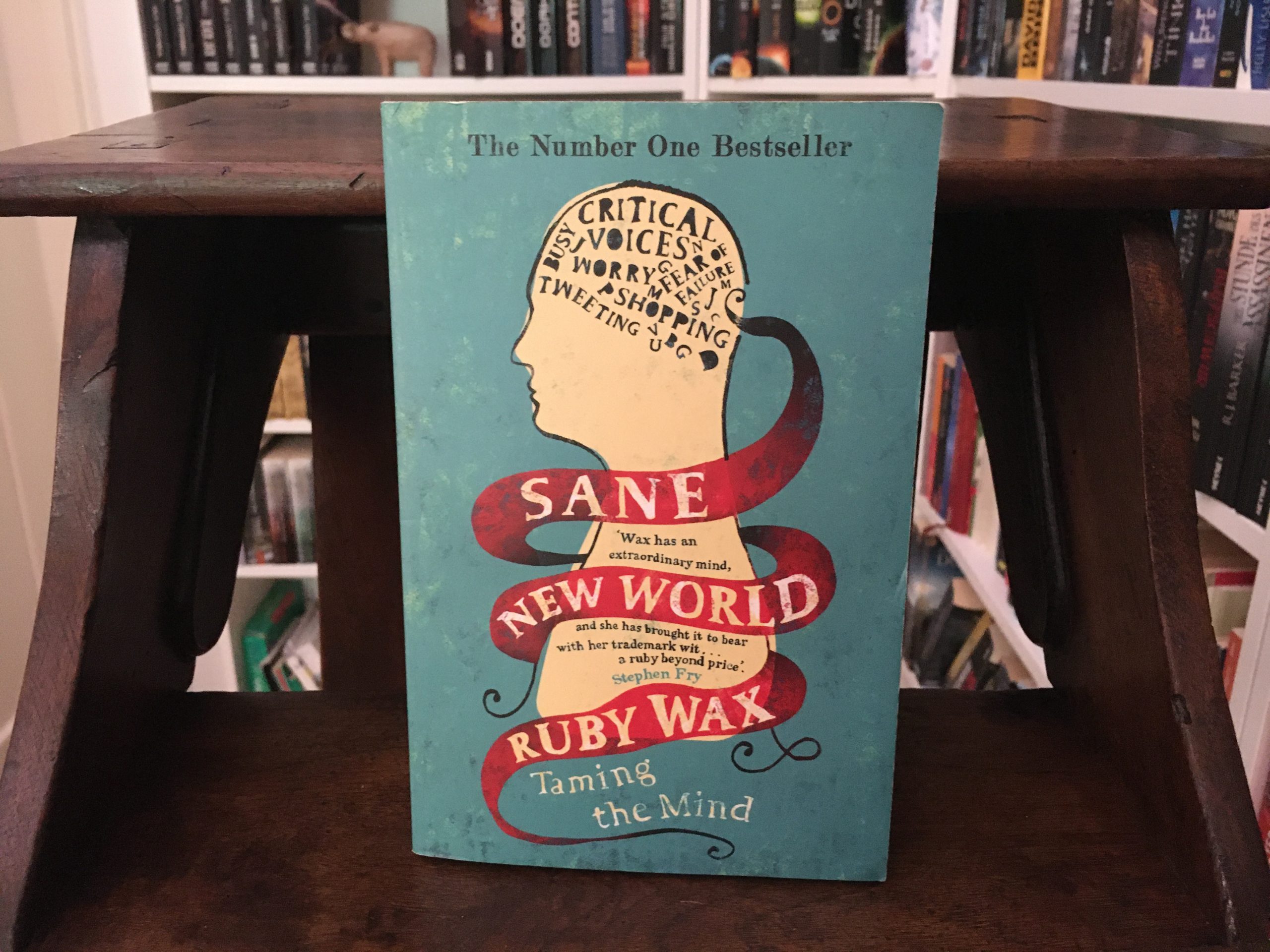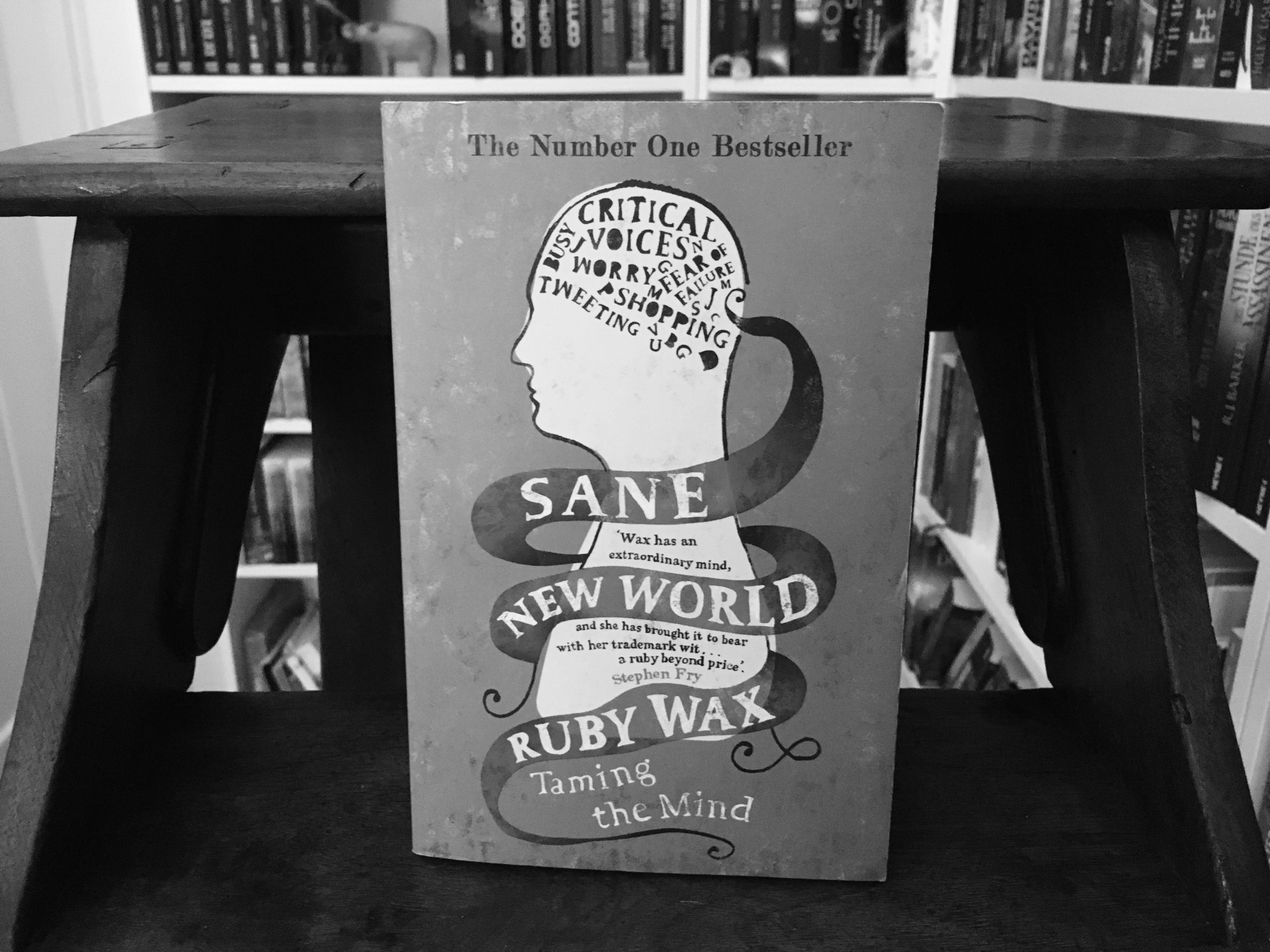
Who would have guessed there would come a time when books about madness would sell like hotcakes?
It’s a phenomenon that has fascinated me for quite some time now. Books about depression, mental health and mindfulness – suddenly they are everywhere. Be it Mark Williams, Matt Haig, David Adam, Ruby Wax or even John Green; whether they tell their stories from a scientific or personal point of view or even in a novel. Everyone is talking crazy today. And both rave reviews as well as outstanding sales figures show that people love it. Why? Maybe because it makes famous people seem more human and less enviable. But probably even more because people can actually relate to the topic. It’s no surprise, really. Why should anyone feel relaxed from head to toe in this frenetic world?
Who says talking about loosing it can’t be funny? Digging deeper into the subject with the wit and wisdom of Ruby Wax.
While I can’t recall exactly why Sane New World fell into my hands, I do know I liked it from the first sentence: „This book is dedicated to my mind, which at one point left town, and the rest of humanity, who perhaps at one time or another might have displaced theirs“. What a warm hearted and funny way to jump into the topic. I was intrigued.
Though less well known in Germany, Ruby Wax is a big name in the UK, where she made a career as a comedian in the 1990s and became famous for her interview-style shows on the BBC. But while she was entertaining and funny to the outside world, behind closed doors she suffered from severe depression. After ultimately having a complete breakdown, she decided to look deeper into what was driving her crazy. More specifically, she went to Oxford to study neuroscience and to understand the human brain.
Who would have thought we could change our brain by ourselves? Welcome, neuroplasticity.
Besides Ruby’s unique humour and brutal honesty about her own story, it’s the scientific part that makes the book so interesting. Particularly when she talks – in the context of mindfulness as a way of healing – about how we can influence the way we think, and the term neuroplasticity itself.
Neuroplasticity is our brain’s ability to change through everything we learn and experience. In dramatic contrast to what science believed until about 15 years ago, we are not „gene-wise hard-wired and imprisoned by our DNA“. We actually and actively can, and do, change and shape our brain – at every age, during every activity we undertake, with every sound, touch, taste and feeling.
Who says crazy people’s advice is only for crazy people? This book is for everyone.
All this is not just good news for those who feel like their brain actually needs to be whipped back into shape. It’s also fascinating for curious lifelong learners. The whole book is not only for those who want to tame their troubled mind by practicing mindfulness in times when we are “slaves to our own busyness”. It’s a terribly honest, smart and funny book for everyone with an interest in how our head works, and how we find peace in our fast-paced world.
